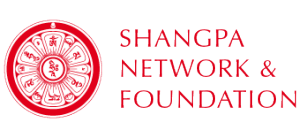Nenyingpa Aï Sengé
གནས་རྙིང་པ་ཨའི་སེང་གེ
gnas rnying pa a'i seng+ge
Alternative Name(s):
Nenyingpa A yi Sengé (gnas rnying pa a yi seng ge)
གནས་རྙིང་པ་ཨ་ཡི་སེང་གེ
13th cent.
Period: 13th–16th // Early Masters
Taranatha’s History of the Shangpa Tradition (shangs pa’i chos ‘byung) presents Nenyingpa Aï Sengé as one of Sangyé Tönpa’s three main disciples, foretold in the Vajrapâda of Deathlessness (ni gu ma’i chos drug rdo rje tshig rkang). The transmission lineages started by Aï Sengé then merged with those of the two other main followers of Sangyé Tönpa : Tsangma Shangtön and Shönu Drup.
In the Blue Annals (deb ther sgon po) it is said that Aï Sengé, master of the Nyingma traditions, became Sangyé Tönpa’s disciple and his main successor at Rigong hermitage. He initiated a lineage of major Shangpa masters who were masters of the Chö tradition as well. His first successor in Rigong was Serlingpa Tashi Pal. It is also pointed out that both Kumârâja and the “hermit of Regong” (re gong ras pa) gave the third Karmapa, Rangjung Dorjé, the Shangpa and Nyingthig transmissions. This hermit could be Aï Sengé, the main master of Rigong at that time, as well as Serlingpa Tashi Pal, the successor to Aï Sengé, or even a forgotten master of Rigong.
In Pawo Tsuklak Trengwa’s Scholar’s Feast (dpa’ bo gtsug lag ‘phreng ba / mkhas pa’i dga’ ston), a major Aï Sengé’s Shangpa filiation is called The 108 named Sengé (seng ge’i ming can brgya rtsa brgyad), as this phrase refers to the masters of Sangphu monastery (formerly Kadampa).
Regarding his name, Neyingpa Aï Sengé was most likely also a master of Nenying, where the major Shangpa transmission’s influence started. This seems even more likely as Nenying monastery was affiliated with Sangphu monastery and that both had been places of old and recent transmissions.



